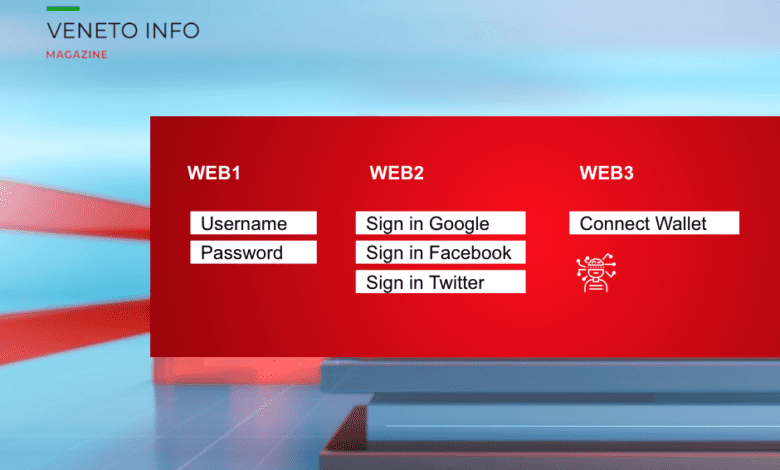The Future is Now: How Web3 is Revolutionizing the Way We Use the Internet

What is the Web3?
Web3, the decentralized web or the internet of value, refers to the use of blockchain technology and decentralized networks to create a new generation of internet applications that are more secure, transparent, and resistant to censorship. Web3 technologies, such as decentralized finance (DeFi), non-fungible tokens (NFTs), and decentralized autonomous organizations (DAOs), allow for the creation of new types of applications and services that operate in a decentralized manner and do not rely on a single point of control or authority.
Web3 applications are typically built on decentralized networks, such as Ethereum, which use blockchain technology to create a secure and transparent ledger of transactions. This allows for the creation of decentralized applications (dApps) that can operate without the need for a central server or authority, and can be accessed by anyone with an internet connection. Web3 can revolutionize the way we use the internet by creating new opportunities for decentralized collaboration, value exchange, and ownership.
What is different between Web1, Web2 and Web3?
Web1, also known as the static web, refers to the early version of the internet that consisted of static HTML pages that could be accessed through a web browser. Web1 was primarily used for information sharing and was not interactive.
Web2, also known as the interactive web, refers to the second generation of the internet that introduced interactive and dynamic features, such as social media, e-commerce, and online communities. Web2 is characterized by the ability for users to actively participate and contribute to the web, rather than just consuming information.
Web3, also known as the decentralized web or the internet of value, refers to the use of blockchain technology and decentralized networks to create a new generation of internet applications that are more secure, transparent, and resistant to censorship. Web3 technologies, such as decentralized finance (DeFi), non-fungible tokens (NFTs), and decentralized autonomous organizations (DAOs), allow for the creation of new types of applications and services that operate in a decentralized manner and do not rely on a single point of control or authority.
In summary, the main difference between Web1, Web2, and Web3 is the level of interactivity and decentralization they offer. Web1 was primarily used for information sharing and was not interactive, while Web2 introduced interactive and dynamic features and allowed for user participation. Web3 takes this a step further by using decentralized technologies to create a new generation of internet applications that are more secure, transparent, and resistant to censorship.

How can Web3 change our lives?
Web3 technologies have the potential to change our lives in several ways:
- Increased financial inclusion: Web3 technologies, such as DeFi, can increase financial inclusion by allowing anyone with an internet connection to access financial services and opportunities, regardless of their location or financial status.
- Enhanced security and privacy: Web3 technologies, such as blockchain, can improve security and privacy by creating a decentralized and transparent ledger of transactions that is resistant to tampering and censorship.
- Improved ownership and control: Web3 technologies, such as NFTs, can enable more secure and transparent ownership of digital assets, allowing users to have more control over their digital property and identity.
- Greater transparency and accountability: Web3 technologies, such as DAOs, can create more transparent and accountable organizations by allowing decisions to be made through a decentralized and transparent process.
- New opportunities for value exchange and collaboration: Web3 technologies can create new opportunities for value exchange and collaboration by enabling decentralized networks and applications that allow users to interact and exchange value in a more secure and transparent manner.
Overall, Web3 technologies have the potential to revolutionize the way we use the internet and interact with each other by creating new opportunities for decentralized collaboration, value exchange, and ownership.
How to begin with Web3?
To begin with Web3, you will need to do the following:
- Learn about blockchain and decentralised technologies: Web3 technologies, such as blockchain and decentralised networks, are complex and may require some learning to fully understand their capabilities and limitations. There are many resources available online, such as online courses, articles, and videos, that can help you learn about these technologies.
- Choose a blockchain platform: Choose a platform that aligns with your goals and has the features and tools you need to build your application or service.
- Set up a wallet: A wallet is a digital tool that allows you to store, send, and receive cryptocurrency and other digital assets. You will need a wallet to store and manage your digital assets on a decentralised network.
- Explore decentralised applications (dApps): dApps are decentralised applications that are built on decentralised networks and do not rely on a central server or authority. Explore existing dApps to get a sense of the types of applications and services that are possible with Web3 technologies.

